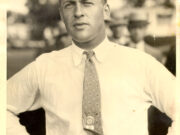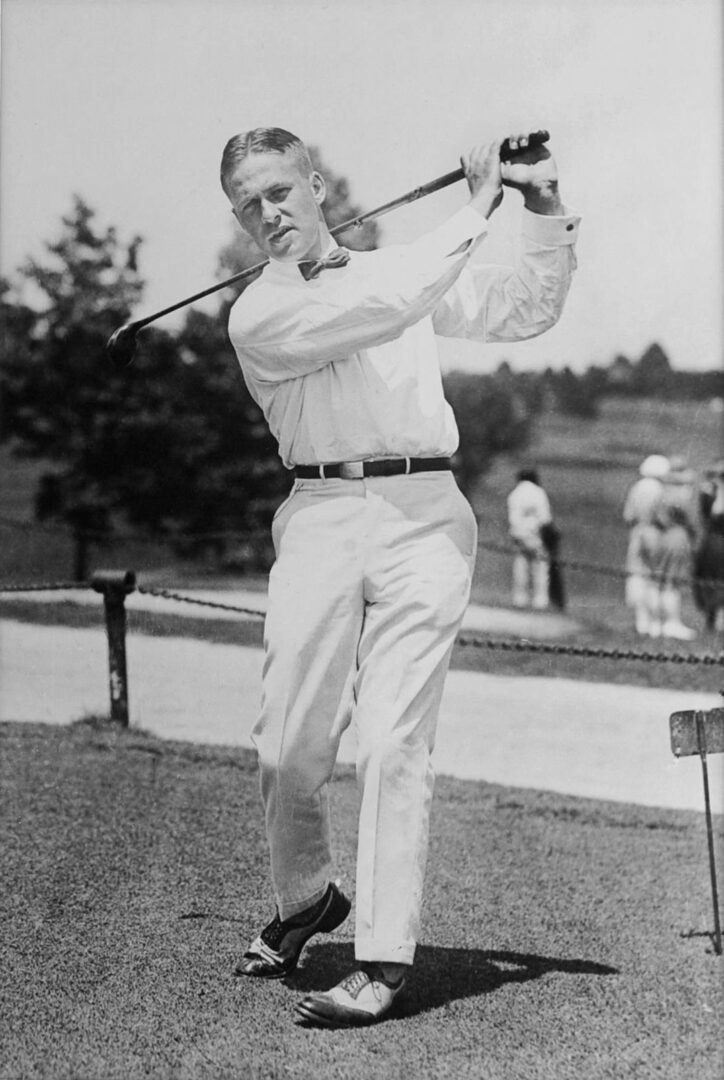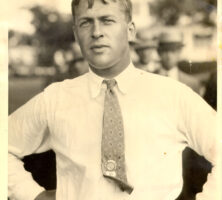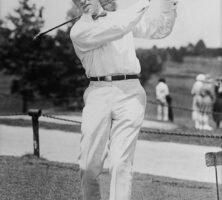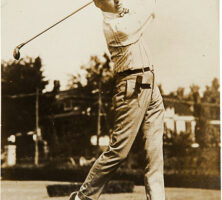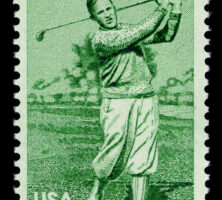The greatest amateur golfer ever, Bobby Jones dominated his sport in the 1920s. In the eight seasons from 1923 to 1930, Jones won thirteen major championships, including five U.S. Amateurs, four U.S. Opens, three British Opens, and one British Amateur. On September 27, 1930, he became the only man to win all four major titles in one season, completing the “Grand Slam” of golf. Then, while still in his athletic prime at the age of twenty-eight, he retired from competition to devote more time to his family and his law practice.
Robert Tyre “Bobby” Jones II was born to Clara Thomas and Robert Purmedus Jones on March 17, 1902, in Atlanta. He was named after his paternal grandfather, a prominent businessman from Canton (Jones later adopted “Jr.” out of respect for his father). In 1907 his father, a successful attorney, joined the Atlanta Athletic Club, which owned the East Lake Country Club in DeKalb County, where the family spent every summer thereafter. It was at East Lake that Bobby Jones learned to play golf, mostly by mimicking the swing of the club’s professional, Stewart Maiden.
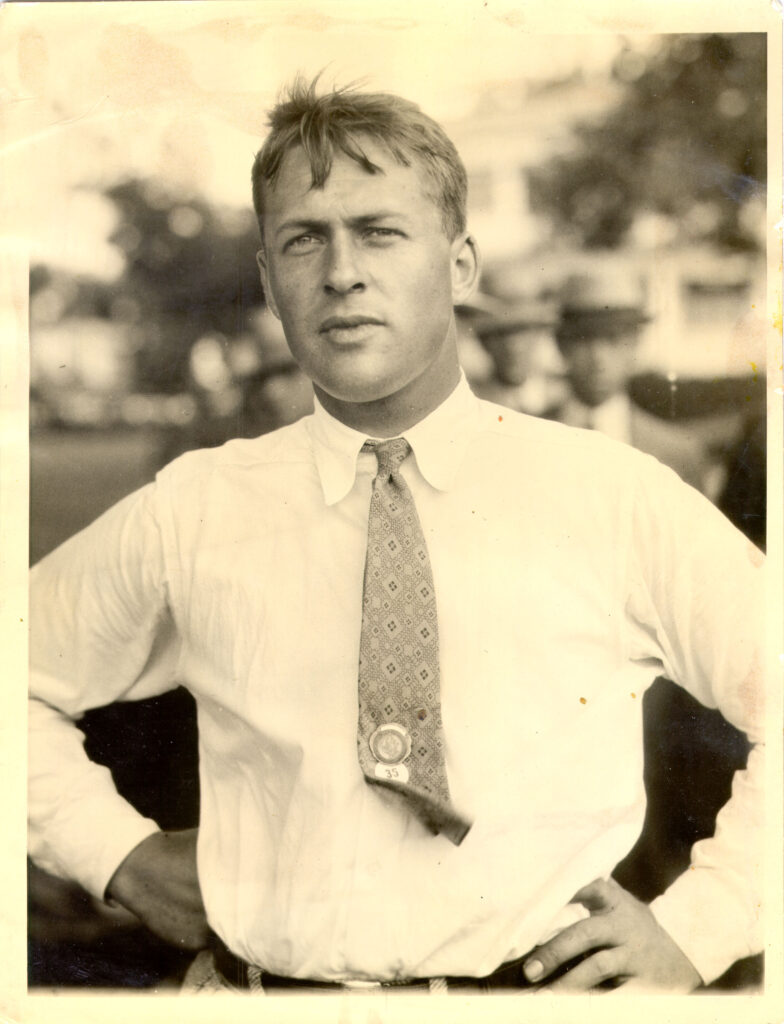
Jones dramatically improved his skill with each passing summer. After winning many regional events, in the fall of 1916 he entered his first national competition, the U.S. Amateur, held at the Merion Cricket Club near Philadelphia, Pennsylvania. Although he was eliminated in the third round, the fourteen-year-old exceeded the expectations of most observers and was quickly dubbed the nation’s top golf prodigy.
Unfortunately, Jones did not continue to meet either his own or others’ expectations. Throughout the next seven seasons, he failed to win anything bigger than a regional event. To make matters worse, Jones developed a reputation as a spoiled, club-throwing hothead. A perfectionist by nature, he was easily angered and too immature to handle his mistakes on the links. Jones’s most egregious example of unsportsmanlike behavior occurred at the 1921 British Open. After struggling through the front side of the third round, he simply picked up his ball on the eleventh hole—figuratively “tearing up his scorecard”—and quit.
In the winter of 1922-23 Jones experienced a metamorphosis; he evolved from a temperamental youth into a disciplined young gentleman on and off the course. He won his first major title, the U.S. Open, later that year to begin his eight-season domination of the sport. Aside from the Grand Slam in 1930, Jones’s most impressive achievement is his record in the U.S. Open. In the 1920s Jones won the event four times and also had four runner-up finishes.
His career is all the more remarkable considering that he competed as an amateur rather than as a professional. Always displaying a sense of modesty, Jones regularly reminded his fans that some things were more important than winning. He became famous, for example, for calling penalty strokes on himself, even when it cost him a championship. Moreover, Jones never accepted prize money, did not play as often as most professionals, and chose to focus on the national championships. Those choices allowed him time to pursue other priorities, including his education and family. In 1922 Jones graduated from the Georgia Institute of Technology with a degree in engineering. Two years later he added a second bachelor’s degree, this one in English literature from Harvard University in Cambridge, Massachusetts. Then in the fall of 1926, Jones enrolled in Emory University’s law program. After just three semesters, he passed the Georgia bar exam and began practicing law at his father’s firm early in 1928.
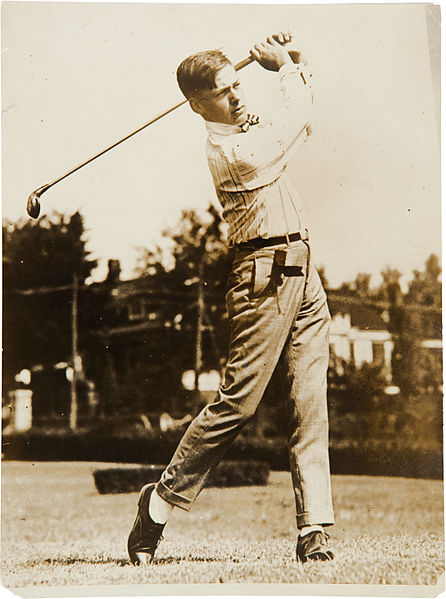
Jones’s most important priority, though, was his family. In the summer of 1924 he married Mary Malone. Over the next seven years, the couple had three children, Clara Malone, Robert Tyre III, and Mary Ellen.
Although Jones retired from competition in 1930, he did not retire from the golf world or from public life. Freed from the financial restraints of formal amateurism, Jones quickly capitalized on his golf success. In 1931 and 1933 he filmed two series of golf instructional shorts that brought him an estimated $250,000. He also signed with A. G. Spalding & Brothers to design and endorse a line of golf clubs. Throughout his life, he wrote hundreds of articles and several books on golf, including the autobiographical works Down the Fairway (with O. B. Keeler, 1927) and Golf Is My Game (1960). His most outstanding project in retirement was the creation of the Augusta National Golf Club in Augusta and the annual invitational tournament it spawned, the Masters. First played in 1934, the Masters became recognized as one of the four major tournaments in golf.
Jones made an appearance each spring at the Masters, even playing in the event until 1948, when his life took a tragic turn. Afflicted that year with a rare spinal disease called syringomyelia, Jones had to give up golf and was soon forced into a wheelchair. He took his final trip to the Masters in 1968. Finally succumbing to his illness, Jones died on December 18, 1971, at the age of sixty-nine. Through it all, he refused to complain about his fate, always presenting a model of perseverance and character.
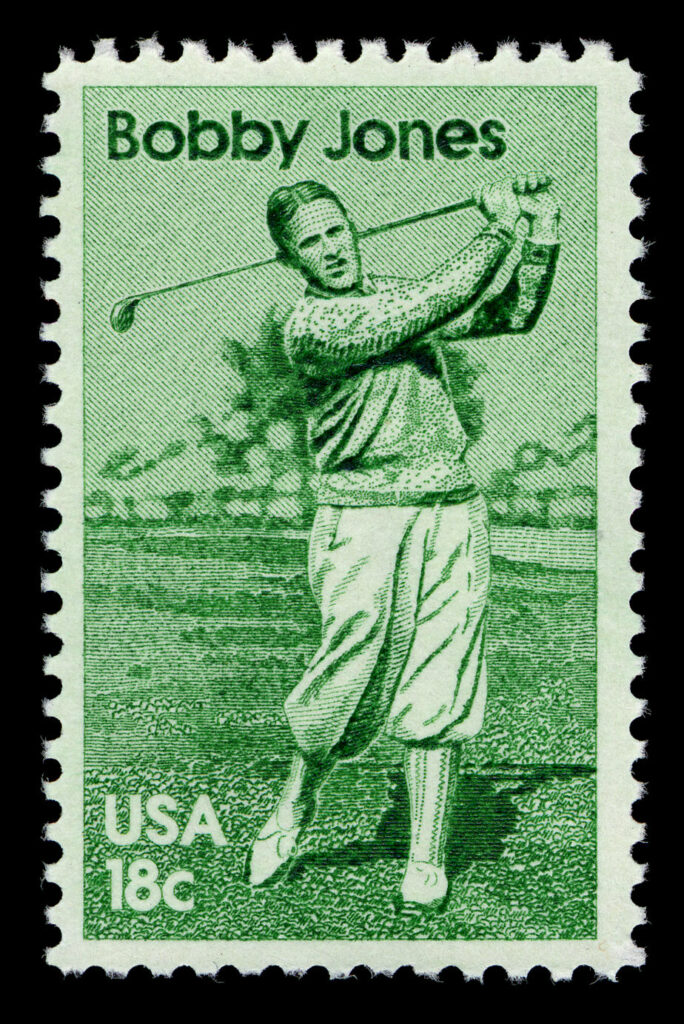
His handling of his illness, the memory of his competitive career, and his Masters Tournament established Jones as one of sports’ most outstanding and admirable heroes. In 1964 he was one of the first athletes inducted into the newly formed Georgia Sports Hall of Fame. The Atlanta Gas Light Company awarded its Shining Light Award to Jones in 1978. A permanent exhibition entitled Down the Fairway with Bobby Jones is on display at the Atlanta History Center, and Bobby Jones: Stroke of Genius (2004), a feature film chronicling Jones’s life and career, was partially filmed in Georgia.


